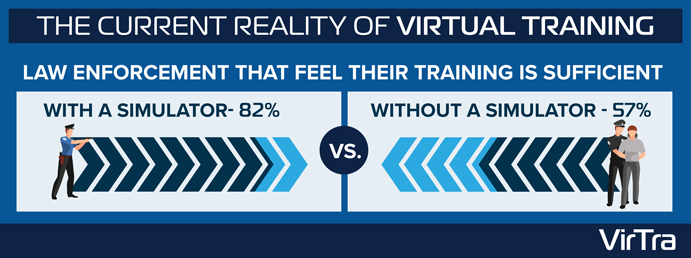
The human brain is capable of many things, but there is considerable research that shows that we all learn in different ways. In order to teach adults a new skill, the human brain requires practice to improve their ability until it becomes second nature. One way to improve these new skills is to enhance your training tactics. A recent survey revealed that law enforcement officers felt 25% more confident in their ability to train when a use of force simulator was part of their training curriculum. This shows that the standards of law enforcement training are evolving to include better technology so that their officers are prepared for the field. But why does training with a simulator make such a big difference? There are several layers as to why simulation has such a profound effect on their improved training:
What is interwoven teaching?
While there are many ways to train law enforcement to have the right skills for the field, there is one effective training method that works in harmony to provide a variety of skills. With simulation training, the trainee has to go through several scenarios repeatedly to understand what actions they should have taken whether it is just a skill builder drill on a range or running through an intense de-escalation scenario where they have to practice calming the person down to a reasonable level. Part of that repetition creates an interwoven strategy that requires the trainer to come back to the same point multiple times. Even better, with the addition of simulation training, agencies can train officers in teams — this increases throughput by allowing more officers to train in less time than classroom lectures. By weaving a variety of skills and people into one training session, the outcome provides more confidence to the officers so that they are prepared for the field.
Law enforcement simulation training vs. traditional classroom
When conducting classroom or roleplaying training, there are significant differences and limitations to what can be conveyed and how much information is received. Another difference is that classroom and roleplay are usually only done on an annual or semi-annual basis. Therefore, what a team of officers learns in the classroom in January is often forgotten by mid-July. So how can you combat this issue of forgetting what is learned? How do you deal with the fact that many skills an officer must count on are perishable? Trainers can present an initial block of training where they learn the material in January and then build on their skill once a month or quarterly to keep the skills sharp and have better retention of the information presented. Likewise, simulation training can build intensity and provide a stressful environment where they can learn from their reactions in a safe space.
Adding Stress Inoculation
By inducing stress into the environment when training with a simulator, you can learn how to hone your skills the real-world situations like active shooters or emotionally disturbed person might require. With the addition of the Threat-Fire®, your team can learn how to de-escalate, to talk someone down off a cliff, or engage a threat all with real-world consequences. By training with a certain amount of threat that a shoot back device provides, law enforcement can improve their skills and marksmanship under pressure all in one training environment. This interwoven strategy, paired with the repetition and quality instructor time in the training simulator, can all add up to a more confident and prepared officer.
Overall, the old methods of training law enforcement will continue to evolve with new technology. By adding simulation training, trainers can elevate the standards for what is considered sufficient, so they are prepared for the reality of today’s problems. With an interwoven teaching method that simulation training can offer by combining a variety of skills all in one training solution, their confidence has improved significantly. The law enforcement of tomorrow will be better prepared for the harsh realities they face every day in the field, thanks to their improved training with simulation.
If you would like more info on how to improve your training with VirTra, click here to learn more.
Recently Published
Join Our Newsletter







